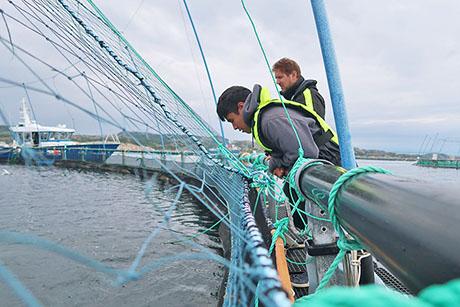Startup with MIT roots wins R&D 100 Award
Leslie Bromberg, a research scientist at MIT’s Plasma Science and Fusion Center, and Alexander Sappok ’09 have been recognized by R&D Magazine for inventing one of the top 100 technologies of the year: the RF-DPF™ Diesel Particulate Filter Sensor. Sappok and Bromberg created the technology, which measures the amount, type, and distribution of contaminants on filters used to reduce engine and vehicle emissions, while Sappok was still a graduate student at MIT’s Sloan Automotive Laboratory.
The two first met when Bromberg attended Sappok’s Sloan Lab seminar about his research on diesel particulate filters (DPF). “After the seminar, Leslie talked to me about an idea he had regarding the potential use of microwaves to try and measure the soot build-up inside the DPF,” Sappok notes. “The core idea was to use inexpensive circuit chips already mass produced for cell phones and other wireless devices in a new and unique application. Rather than transmitting data wirelessly, our approach was to monitor changes in the wireless signal itself, and use the signal to sense specific quantities of interest, such as soot, in the DPF.”
Bromberg had a number of DPFs in his lab, left over from plasma experiments focused on making auto engines burn fuel more cleanly and efficiently. In their spare time Bromberg and Sappok conducted preliminary tests, first using toothpicks to simulate soot loading in the tiny filter channels.
From those early primitive measurements they were able to demonstrate the proof-of-concept, and over the next few years they worked on the idea, eventually building a business case around the technology. Entering the MIT $100K Entrepreneurship Competition in 2009, they made it to the semifinals for the MIT Clean Energy Prize. They also worked closely with MIT Venture Mentoring Service (VMS).
In 2009 Bromberg and Sappok formally incorporated their company as Filter Sensing Technologies, Inc. (FST). On the day of his graduation that year, Sappok received a letter from the National Science Foundation notifying him of a grant to further develop the technology. This allowed FST to build a rough prototype and conduct an engine test at Oak Ridge National Laboratory to prove that the sensing method would work on an engine. The company has since grown, and in 2011 it received a $2 million grant from the U.S. Department of Energy to further develop and commercialize the technology.
Bromberg and Sappok expect their sensing technology to offer an economical alternative to the current pressure sensor-based controls, which measure the amount of contaminants indirectly and suffer from a large degree of error. The RF-DPF can measure the amount of soot and ash directly and more accurately, enabling improved engine control and reduced fuel consumption. Results from fleet testing with Volvo/Mack trucks operated by the New York City Department of Sanitation have shown the potential to reduce the DPF-related fuel consumption by up to a factor of two, and have helped attract interest from major engine and vehicle manufacturers and component suppliers.


